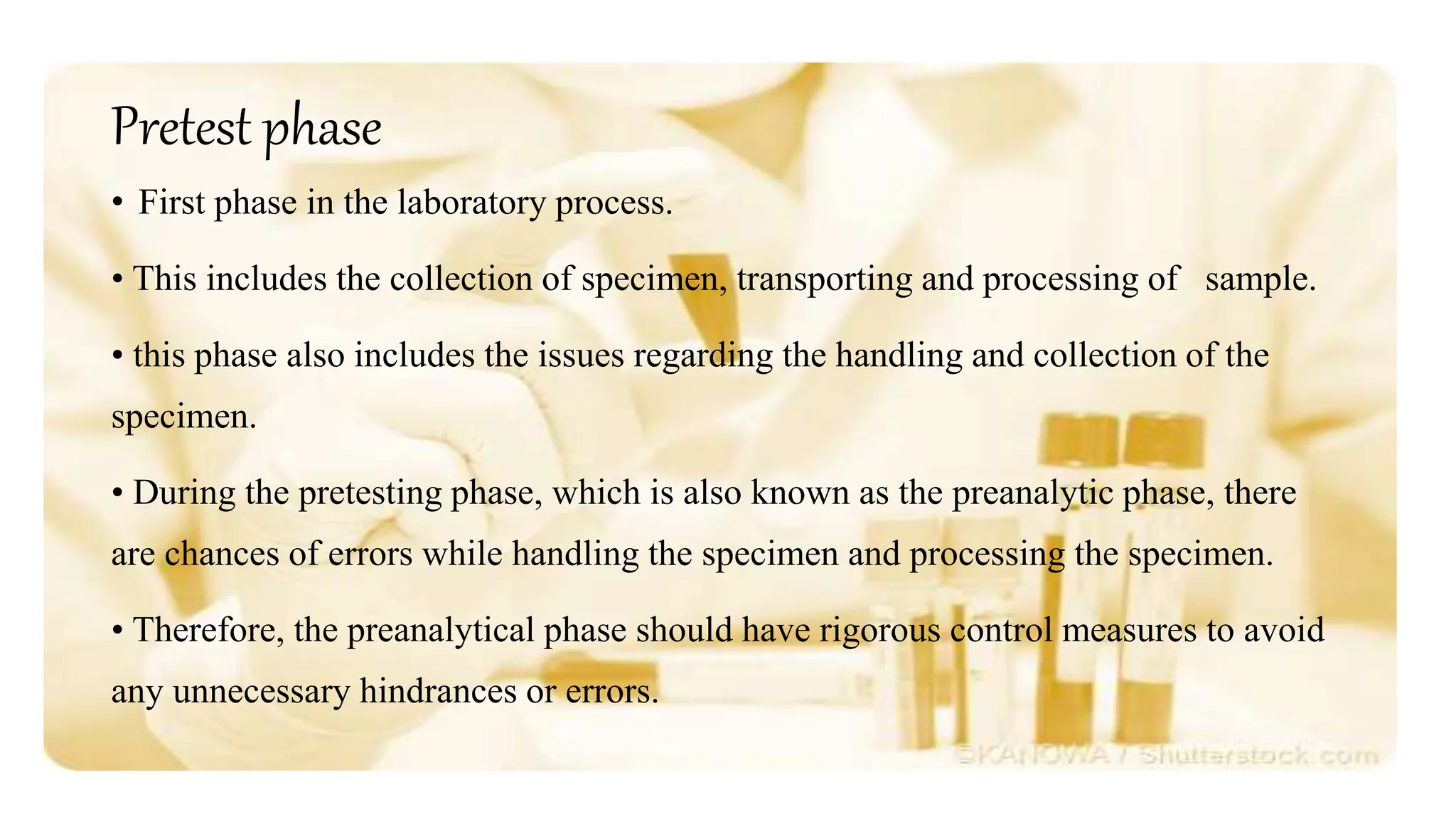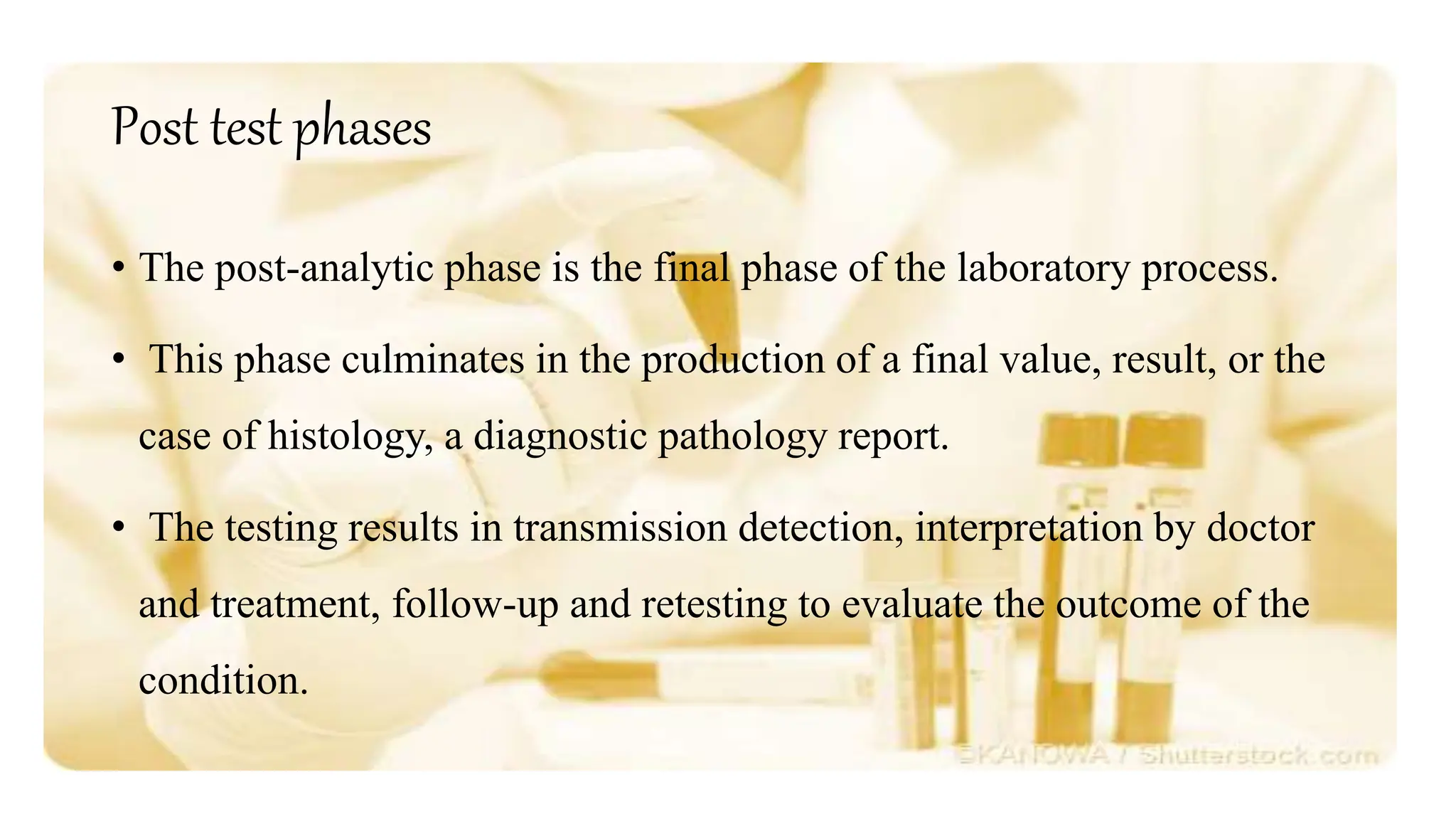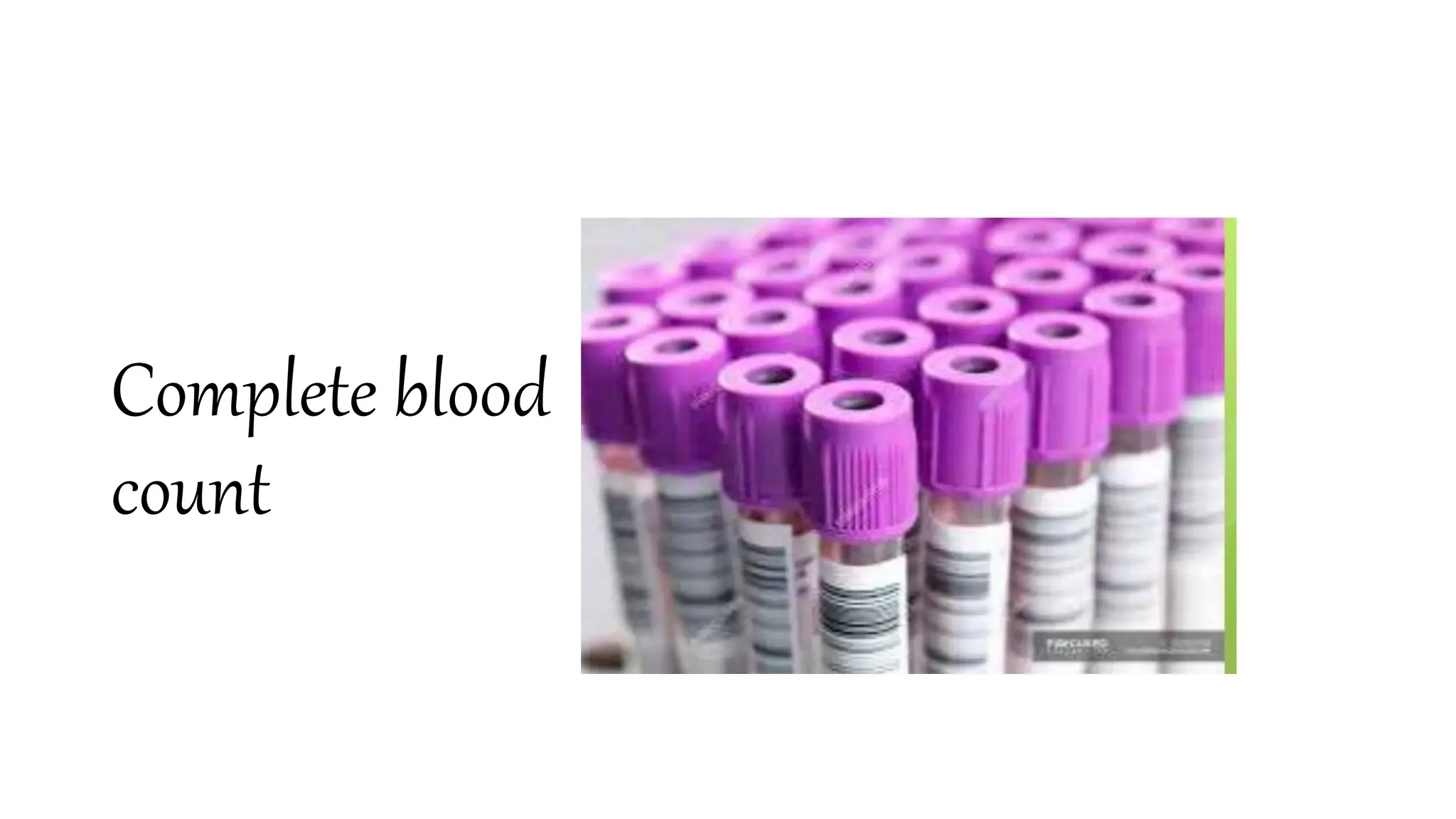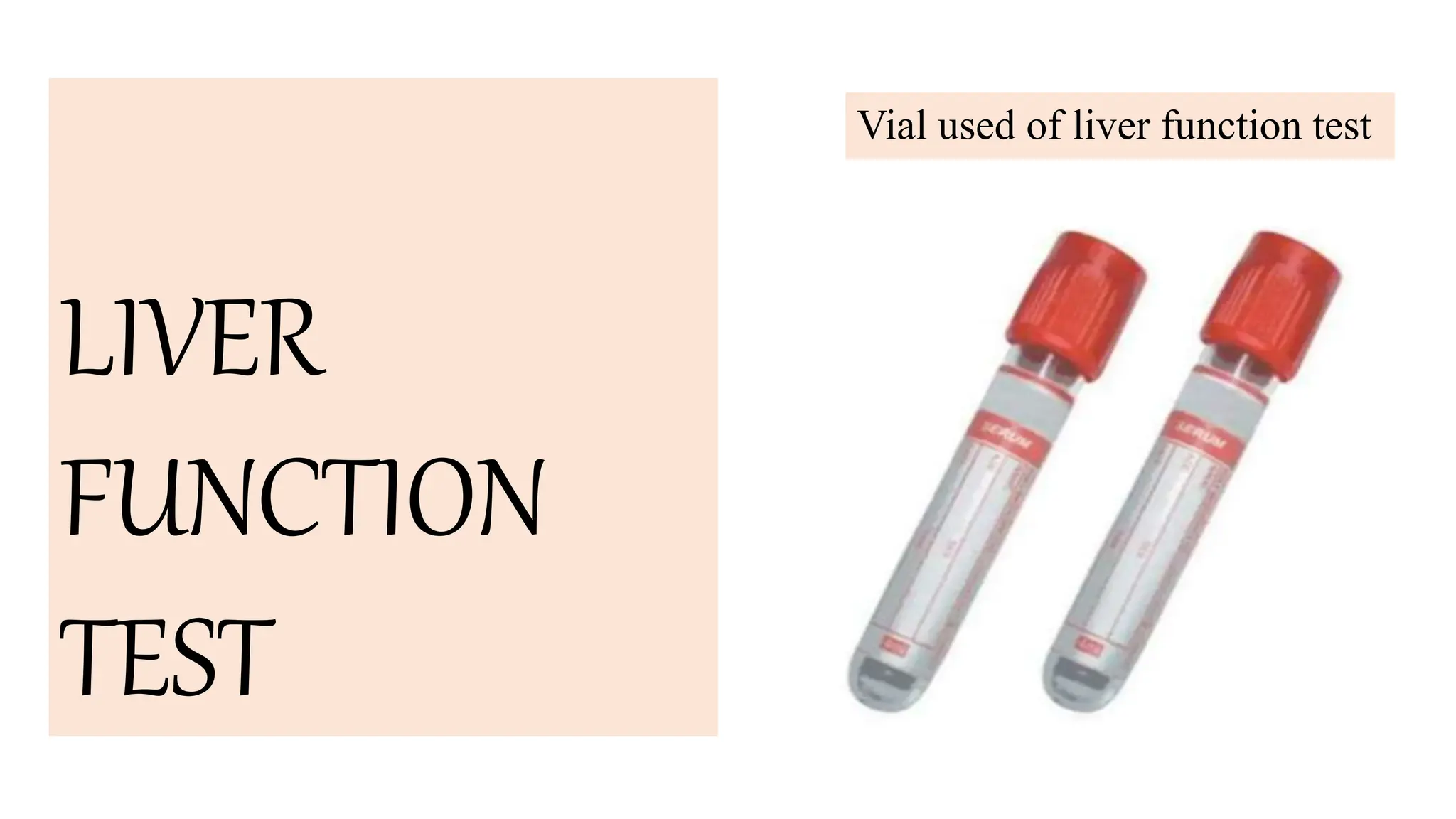The document outlines the foundational aspects of diagnostic testing in nursing, including definitions and phases of diagnostic testing such as pretest, intra-test, and post-test phases. It details specific tests like complete blood count, liver function tests, and urine analysis, including procedures for specimen collection and analysis. The document aims to educate nursing students on various diagnostic tests and their significance in patient care and treatment monitoring.























































































